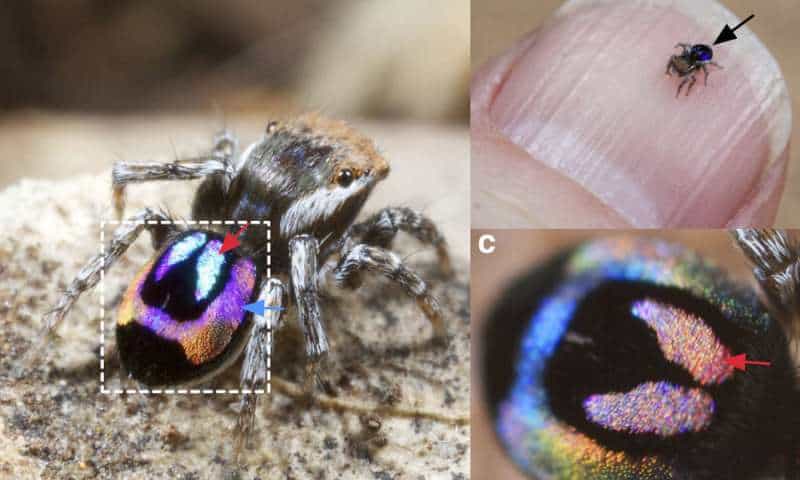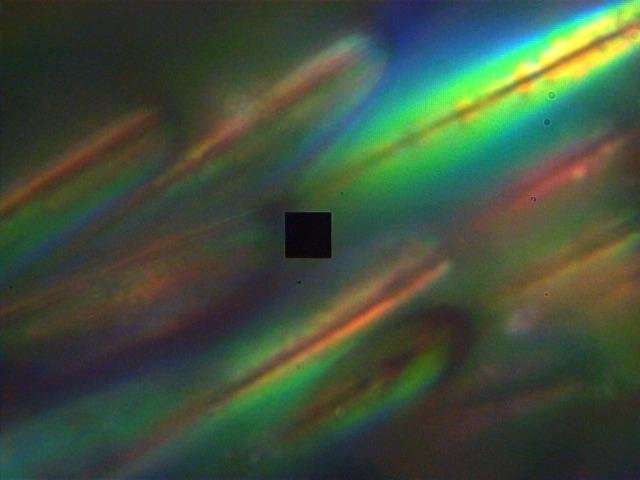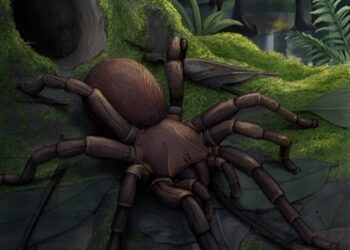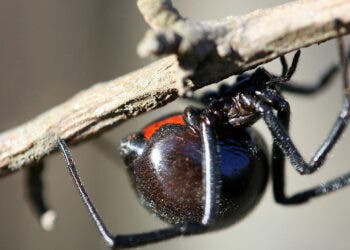
By now, most of you are familiar with the flamboyant peacock spider. This tiny spider, which doesn’t grow longer than 5 millimeters, is famous for its intricate body colorations and courtship patterns. They also have large eyes, which are necessary for good color vision, and which also make them look extremely cute from our vantage point.

Among peacock spiders, one species is particularly interesting; male rainbow peacock spiders (Maratus robinsoni) have an intense rainbow-iridescent coloring on their back to signal courtship displays to females. As far as scientists are aware, it’s the first instance in nature of males using an entire rainbow of colors to entice females.

The tiniest rainbow in the world
An international team of researchers set out to unravel how these spiders manage to produce this unique iridescent signal. The scientists used a diverse array of tools and techniques, such as light and electron microscopy and imaging scatterometry to arrive at the origin of the signal — specialized abdominal scales on the spider’s body.

The scales are covered in nanoscale diffraction grating structures which, in conjunction with the scales’ microscopic curvature, separate light into its component wavelengths. The spiders’ scales function similar to a prism in order to produce much finer angles and smaller distances than currently possible with man-made technology.
“Who knew that such a small critter would create such an intense iridescence using extremely sophisticated mechanisms that will inspire optical engineers,” said co-author Dr. Dimitri Deheyn, a researcher at Scripps Oceanography.
To validate their hypothesis, the researchers even 3-D printed their very own nano prototypes after the same design as the peacock spider. Indeed, the scientists managed to replicate the spider’s intense rainbow iridescence.
“As an engineer, what I found fascinating about these spider structural colors is how these long evolved complex structures can still outperform human engineering,” said Dr. Radwanul Hasan Siddique, a postdoctoral scholar at Caltech and coauthor of this research. “Even with high-end fabrication techniques, we could not replicate the exact structures. I wonder how the spiders assemble these fancy structural patterns in the first place!”

Perhaps, one day, this newfound knowledge can serve as inspiration for a variety of new applications; for example, devices like optical spectrometers could potentially be scaled down in size. Fields ranging from life sciences and biotechnologies to material sciences and engineering could be impacted by the findings.
Scientific reference: Bor-Kai Hsiung et al. Rainbow peacock spiders inspire miniature super-iridescent optics, Nature Communications (2017). DOI: 10.1038/s41467-017-02451-x






